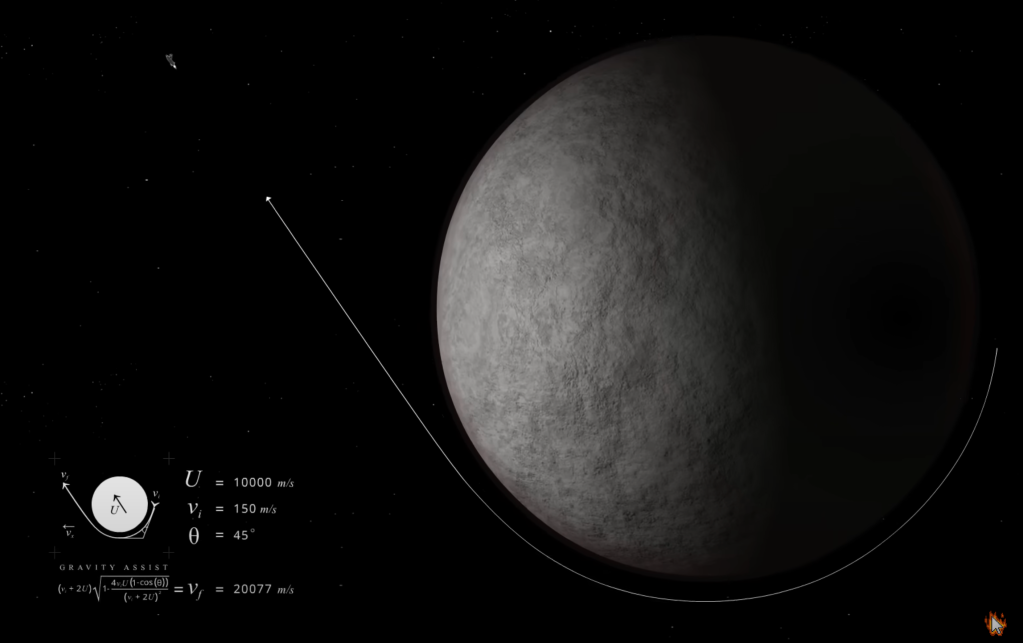
“Animation vs. Physics “ by Alan Becker on Youtube
Before we get started, the video linked above is phenomenal. If you have any interest in physics, astronomy, astrophysics or anyting related, I cannot recommend this video enough. It encompasses all of these topics in a fun animated way that also gives Interstellar vibes with its intricacies. The screenshot above is what as known as a gravity-assist maneuver, or more slangily, and in my opinion more fun, “The Gravitational Slingshot.” In short, the way it works, is when an object (comet, ship, etc.) is on a path to fly past a planet, but close enough in proximity that said planet’s gravitational pull is strong enough to alter the course of the object. The important piece here is that the object must be moving with a large enough initial velocity such that it has enough momentum so that it does not get sucked and stuck in orbit of the planet. Essentially a sling-shot maneuver is used as a direction change while simultaneously picking up speed. This maneuver has been used several times before by NASA. This goes to show how the force of gravity can be “harnessed,” and what amazing things we can do with it.
Leave a comment